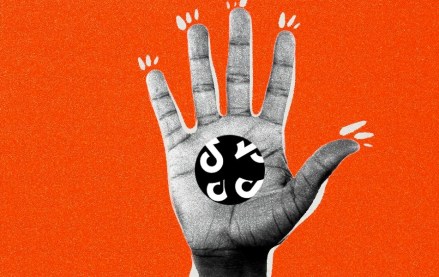Insights from CTV leaders at Dentsu, Horizon Media and more

John Winsor is CEO of the agency Victors & Spoils
Change is the one constant we can count on in life — and in marketing.
Technology continues to drive much of the changes in marketing. Creative ideas aren’t just coming from agencies’ creative departments. Agencies and their clients need to stay well ahead of the curve in understanding the latest tools and platforms to be able to discern which of them have staying power — and which ones are just passing fads.
How agencies fare will be determined by how well they adapt and capitalize on the following six developments.
Technology will continue to disintermediate.
In every industry, technology continues to make processes more efficient and, in some cases, obsolete. Agencies aren’t the only places for brand marketers to get creative campaigns. The agency business model of the future will be a hybrid, collaborative enterprise. It will be made up of a smaller group of senior staff across all major disciplines that will sit on top of a collection of relationships with startups, technology companies and individuals that provide the agency and its clients with best-in-class brand thinking. Brands and agencies (or holding companies) must not work in silos. There must be open systems for sharing.
More competition from media companies.
Many social, content and media companies are realizing that they can increase their revenues by building creative studios that allow them to give away creativity to brands so that they will spend more money on a media buy with them. The rise of Facebook’s Creative Shop, Google’s Creative Lab and YouTube Studio allows these players to create content as a way to win more media dollars on their platforms. Other companies that have hopped on the content-creation train include players like iHeartmedia, The New York Times, WSJ, and Buzzfeed. With continued competition of this nature, the price of creative will become commoditized.
Brands will continue to cut out agencies.
As the cost of media drops, the relationship with consumers will become a core competency of every brand. Brands will build their own media technology and produce their own content. Likewise, the rise of programmatic marketing (easing the access) and the rising importance of leveraging first-party data (on premise) are both in favor of a new relationship with agencies. Good examples of brands leading the charge are Red Bull, Patagonia and GoPro. Agencies will need to rethink what they are and become platforms of technology and services. However, this will take time as many large brands will continue to struggle with transforming themselves, and their own bureaucracies will slow the evolution. Likewise, the continued shift toward a multicultural marketplace in the U.S. will make the advertising marketplace sufficiently complex to create opportunities for agencies.
Co-opetition.
Talent is the key to success for agencies today. But there is no way for any one organization to hire the best. As Sun Microsystems co-founder Bill Joy once famously said, “No matter who you are, most of the smartest people work for someone else.” To attract top talent, agencies will need to change from being closed systems selling solutions to open systems that help clients define the right marketing questions and find the best talent to answer them. The future will be collaborative, mixing third party assets with owned solutions to create the most efficient and effective structures.
Ideas come from everywhere.
Technology enables everyone to become producers, brand ambassadors or media channels. Just a couple years ago, Whit Hiler was a complete amateur who wanted to make ads. Today he’s known as the man behind some of the more interesting and ridiculous campaigns of the last few years, including Beardvertising, “The World’s Longest Hashtag,” created to promote A&W’s new chicken sandwich and Applebee’s Girls Night Out. Whit had applied for several agency jobs but had never gotten a return call. His first foray into the industry was from an open call for Victors & Spoils. He won, and his idea for Harley Davidson, “No Cages,” became the brand anthem. The key for agencies is to leverage existing user-generated content and consumer interactions with smart solutions (image recognition, context-based targeting, and crowdsourced challenge/gamification). Apps such as Magisto and Pixlee will allow brands to aggregate and use user-generated content at low cost.
People are the new media channels.
Instead of creating ads to be placed on media to reach people, the new paradigm will be to create shareable and scalable ideas and then let people themselves distribute them. Recent research from IPSOS found that content created by consumers is 35 percent more memorable and 50 percent more trusted. This represents the rise in organic marketing.
The key to success here will be to find ways of monitoring and measuring, and optimizing communications — whether they come from a multichannel broadcasting company or a single individual who is “broadcasting” across channels.
More in Marketing

Retail media’s mid-2025 reality: Why advertisers are going all in on full-funnel
Retail media’s meteoric rise may finally be leveling off — and that’s forcing advertisers to take a harder look at what they’re getting for their money.

TikTok might be working on a standalone U.S. app, but marketers aren’t sold on the idea – yet
TikTok is developing a lifeboat for its American business, but media buyers are wary of advertising implications.

Bold Calls for the back half of 2025
Now’s a good moment as any to take stock —and make a few bold calls about what’s coming next.





